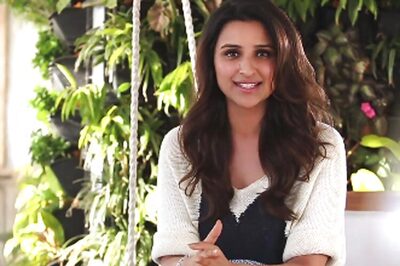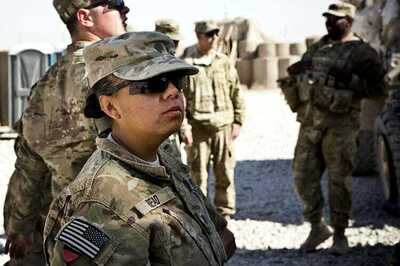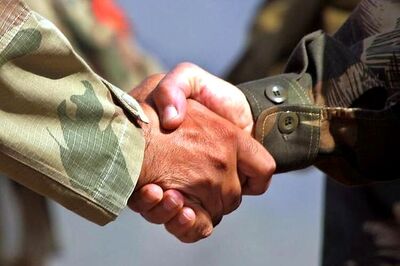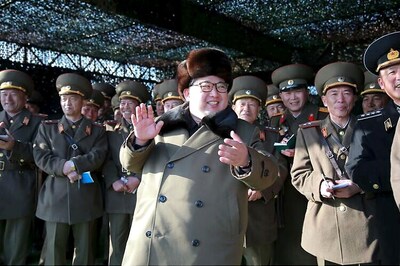
views
What is Dogeza?
Dogeza is the most formal apology in Japanese culture. It’s the most sincere way to apologize for a severe offense. This posture signifies absolute submission and extreme regret to the wronged party. Many people in the West gain an understanding of Japanese culture – including dogeza – by watching movies or anime. In modern times, it’s rarely used because it’s seen as having contempt for yourself. The word “dogeza” means prostrating on the ground.
Dogeza can also be used to show respect. In the past, people in the lower classes would bow to Japanese magnates as they passed on the road. Dogeza is also used to show respect and thanks while asking someone for a significant favor. For example, you might perform a dogeza while asking your partner’s parents for permission to marry.
Performing Dogeza
Sit on the floor in a kneeling posture. Bend your knees under you so your shins are resting on the floor and you’re sitting on your heels. Keep your back straight and your shoulders squared. This seated posture is called seiza. It only becomes dogeza as you lean forward.
Lean forward and place your hands on the floor in front of you. Rest one hand on the other in a perpendicular arrangement, making a loose triangle shape. Place your hands on the floor about a foot in front of you. Keep your back posture as straight as possible.
Lean forward at the waist while apologizing. As you lean your body forward, state what you are apologizing for. Ask the injured party for forgiveness. Dogeza is only necessary for grievous offenses, so apologize and ask for forgiveness more than once, or you may not seem sorry enough for your behavior. An appropriate apology in Japanese might be moushi wake gozaimasen which translates to “there is no excuse.” It’s also a good idea to have an anguished expression to communicate your contrition nonverbally. Keep your eyes cast downward, and do not make eye contact with the injured party. This can be interpreted as challenging or disrespectful and make you seem less sincere. Pause when your head is bowed low before your forehead touches the ground to repeat your apology.
Bow all the way forward and touch your forehead to the ground. Slide your hands apart to support the weight of your upper body. Then, touch your forehead to the ground in the space between them. Hold this posture until the injured party asks you to get up or refuses your apology and walks away.
Bowing in Japan
Bowing plays a central role in Japanese etiquette. Japanese children are taught to bow as a greeting and to show respect from an early age. In Japan, people bow to say hello and goodbye, at the beginning and end of a meeting, when expressing gratitude or apologizing, to show appreciation or sympathy, and more. There are two main types of bowing: standing (or ritsurei) and kneeling (or zarei).
Standing Bows When standing, there are three levels of bows, with the deepest showing the most respect. Eshaku is the shallowest bow performed by bending forward to about 15 degrees. Keirei is slightly deeper at 45 degrees. Saikeirei is the deepest bow at 90 degrees. To properly bow, breathe in and lean your upper body forward. Once you reach the appropriate angle, breathe out. When you’ve exhaled, inhale as you raise up again. Always hold your back straight and bend at the waist.
Kneeling Bows These bows are performed while in the formal sitting posture, seiza, with your legs folded and sitting on your heels. This is the way you are expected to sit in formal situations to show respect. Senrei is commonly used as a casual but polite greeting. It’s performed by dipping your body forward about 30 degrees while seated. Futsurei is more common during formal situations. Bend your upper body forward until your face is about 30 cm (12 inches) from the ground with your hands in a triangle under your face. A seated saikeirei is the most formal kneeling bow. Bend forward until your chest presses against the tops of your thighs and your face is about 5 cm (2 inches) from the floor. As you bow, move your hands to about 7 cm (3 inches) from each side of your knees.
Apologizing in Japan
Apologizing has an important role in Japanese culture. While most cultures value courtesy, Japan is well-known for placing a strong emphasis on being polite. Apology etiquette is an essential part of Japanese good manners. There are many different forms of formal and informal apology. You must be familiar with the appropriate forms of apologizing in each situation to avoid making etiquette mistakes in Japan.
Formal Japanese Apologies Owabi moushi agemasu - I apologize. Moushiwake gozaimasen - I’m terribly sorry. Owabi moushi agemasu - I offer my deepest apologies. Hansei/koukai shite orimasu - I regret what I have done. Benkai no yochi ga nai - There’s no excuse. Gomeiwaku o okake shite sumimasen - Sorry to bother you. Shitsureishimashita - That’s very rude of me.
Informal Japanese Apologies gomen or gomen nasai - I’m sorry. Sumimasen - Excuse me. Waruina or warui warui - My bad. Hontōni mōshiwakenai - I’m so sorry. Shitsurei shimasu - Please excuse me. Watashi no machigai desu - My mistake. O yurushi kudasai - Please forgive me.




















Comments
0 comment